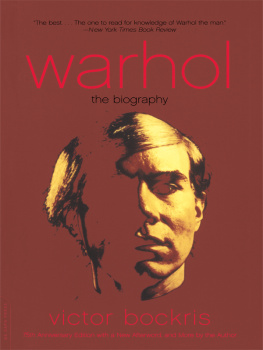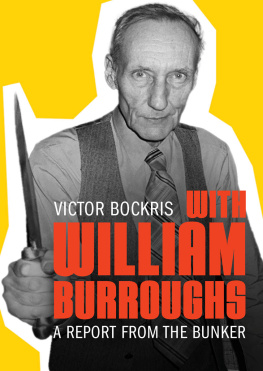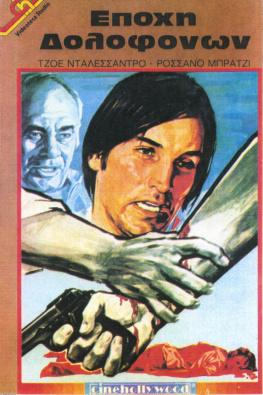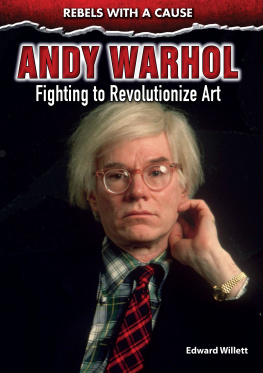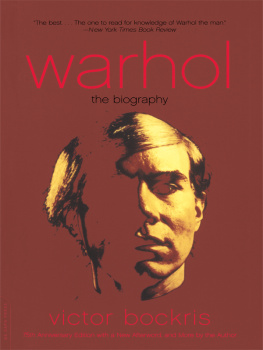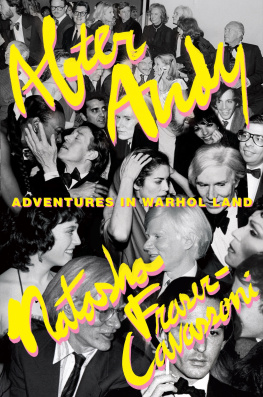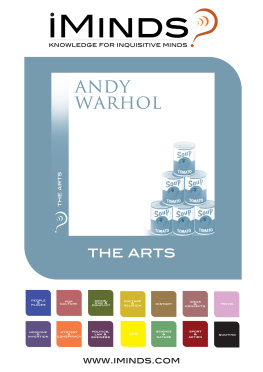This new biography will satisfy Warhol fans, detractors, and gossip hounds alike.... It is a personal, chronologically organized story of one of the most controversial, influential, and enigmatic figures of recent years.
By far the most revealing parts of Bockriss book (I doubt if there will ever be a better one, given that Bockris has been hard working, questioning, and a friend) concern Warhols origins in industrial Pittsburgh. The origins of so much that was to comethe star worship, the insularity, the snobbery, even the soup canscan be traced to those tough early years.... [This book] makes increasingly clear that far from being a weirdo-outcast Warhol was in fact a pretty accurate personification of his country.... Warhol emerges as a shy, nervous, vulnerable man who hid behind a carefully constructed facade of cool detachment.
Superbly done.... Here Warhol and the courageous and weird personalities around him speak without fear.
An impressive and entertaining work, one which will be very hard to beat.
ALSO BY VICTOR BOCKRIS
Rebel Heart: An American Rock n Roll Journey
(with Bebe Buell)
Whats Welsh for Zen: The Autobiography of John Cale
(with John Cale)
Beat Punks
Patti Smith: An Unauthorized Biography
(with Roberta Bayley)
Transformer: The Lou Reed Story
Keith Richards: The Biography
Uptight: The Story of the Velvet Underground (with Gerard Malanga)
Making Tracks: The Rise of Blondie (with Debbie Harry and
Chris Stein)
With William Burroughs: A Report from the Bunker
Ali: Fighter, Poet, Prophet
Warhol
The Biography
75th Anniversary
Edition
Victor Bockris
Copyright 1989,1997,2003 by Victor Bockris
This Da Capo Press edition of Warhol is an unabridged and expanded
republication of the edition first published in London in 1989. It is
reprinted by arrangement with the author.
All rights reserved. No part of this publication may be reproduced,
stored in a retrieval system, or transmitted, in any form or by any means,
electronic, mechanical, photocopying, recording, or otherwise, without
the prior written permission of the publisher. Printed in the United States
of America.
Cataloging-in-Publication data for this book is available from the
Library of Congress.
First Da Capo Press edition 1997
Second Da Capo Press edition 2003
ISBN-10: 0-306-81272-X ISBN-13: 978-0-306-81272-9
eBook ISBN: 9780786730285
Published by Da Capo Press
A Member of the Perseus Books Group
http://www.dacapopress.com
Da Capo Press books are available at special discounts for bulk purchases
in the U.S. by corporations, institutions, and other organizations. For
more information, please contact the Special Markets Department at the
Perseus Books Group, 11 Cambridge Center, Cambridge, MA 02142, or
call (800) 255-1514 or (617) 252-5298, or e-mail
.
ACKNOWLEDGEMENTS
For inspiration, support, ideas and belief in this book I want to thank above all Andrew Wylie, Jeff Goldberg, Bobbie Bristol, Miles, Gerard Malanga, Stellan Holm, Steve Mass, John Lindsay, Ingrid von Essen, and Elvira Peake.
For sharing their experiences with me I want to thank everybody interviewed in the book who gave so generously of their time, particularly Paul Warhola, George Warhola, James Warhola, John Warhola, Margaret Warhola, and Ann Warhola, Billy Linich, Ondine, John Giorno, Nathan Gluck, and Ronnie Tavel.
For emotional support, lodging and aid through the five and a half years it took to complete the book, I want to thank Price Abbott, Susan Aaron, Legs McNeil, Rick Blume, Jeffrey Vogel, Otis Brown, Jo Fiedler, Kym Cermak, Gisela Freisinger, Debbie Harry, Chris Stein, Duncan Hannah, Beauregard Houston-Montgomery, Karen Mandelbaum, Rosemary Bailey, Stewart Myer, Christopher Whent, Claude Pelieu, Mary Beach, David Rosenbaum, Terry Sellers, Terry Spero, Miriam Udovitch, Maryann Erdos, Suzanne Cooper, Helen Mitsios, and Liza Stelle.
For advice I wish to thank William Burroughs, Dr James Fingerhut, Vincent Fremont, Allen Ginsberg, Lou Reed, Raymond Foye, Albert Goldman, and Paul Sidey.
Jeff Goldberg played a vital role in helping to organise and edit the manuscript during its fourth year.
Photo research: Gerard Malanga.
Heroin: copyright 1967, Oakfteld Avenue Music Ltd, used with permission.
INTRODUCTION:
HOW I WROTE WARHOL:
THE BIOGRAPHY
It all began with a visit to Muhammad Alis training camp, Fighters Heaven. Andy Warhol was commissioned to paint Muhammads portrait. He took me along in the fleet of dark blue Lincoln limousines that cruised down the Pennsylvania turnpike that crisp early morning, August 16, 1977, as Elvis lay dying in Memphis. I had written a book about Alis poetry, thus incurring the champs lasting friendship, and Andy knew that he would need somebody to bridge the gap between him and the most famous man in the world. I must have done my job because when he published his first book of photographs, Exposures, two years later he dedicated an entire chapter to this visit, writing in it, Victor Bockris is a brilliant young writer who only writes about three people: William Burroughs, Muhammad Ali and me. Victor Bockris also has more energy than any person I know. He types like Van Cliburn plays the piano. Hes always tape recording and taking pictures. I cant keep up with him.
Between 1977 and 1981 I wrote a number of magazine articles about Andy. He usually liked them. Once he did ask to see a taped interview we had done together before it was published and told me to take out some of the stuff about piss and shit. He also said it was too English. I wrote the first draft of one of his books. I wrote his lines in the dreadful movie we acted in together, Cocaine Cowboys. In fact, we made a bunch of tapes together with William Burroughs, and although I often made mistakes (he never forgave me for the disastrous Jagger-Burroughs dinner!), over the years he encouraged, inspired, and advised me. I learned a lot about writing from Andy, and in 1981 I dedicated my book With William Burroughs to him. I see now how each piece was a step toward this book.
Only Andy Warhol, who was virtually attacked every time he walked out the door, could fully understand how ironic it was that Truman Capote was crucified for writing Answered Prayers. What did they think I was doing there? Truman cried. I was a writer. Andy knew that writers were always on duty, because he was a writerin the sense that more people knew his pictures like the Campbells Soup Can and Sleep from their titles than from seeing them, and during his lifetime he did publish 15 books and, at its peak, Andy Warhols Interview was the best magazine in the world. He was primarily a conceptual artist, an author of concepts whose philosophy will in time stand him in as good stead as his painting. And when I started visiting the Factory in 1973, Andy knew that I was there as a writer; he knew that one day I would write a book about him. Anybody who doubts that only has to peruse the Exposures quote. It can almost be seen as a challenge to write the book.

